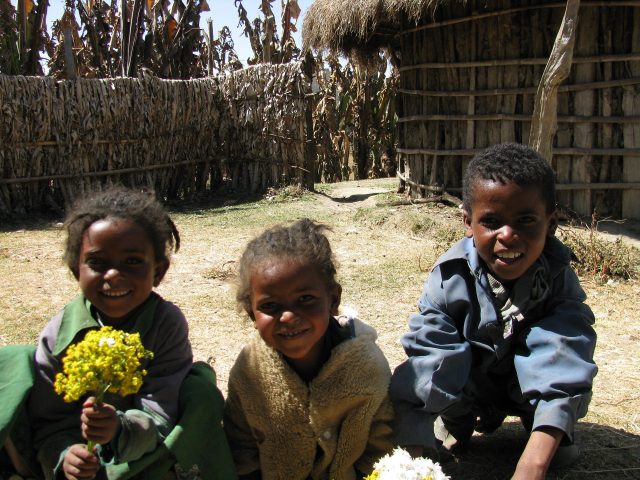The Omotic branch of the Afro-Asiatic language family is made up of about 40 languages mainly spoken in western Ethiopia. It is interesting to know that the Omotic branch is considered to be one of the most controversial ones. Some scholars assign Omotic languages as West Cushitic subgroup of the Cushitic superfamily rather than as a separate entity. The thing is that the areas where the Omotic languages are spoken are dominated by Cushitic languages. Furthermore, speakers of the Omotic languages were for many years very little known. That is why the Omotic languages sometimes are even placed by some linguists in the neighboring to the Afro-Asiatic phylum, the Nilo-Saharan phylum.
It is important to mention that the descriptive and comparative work on the Omotic languages began not so long ago, in the 1980s. This fact is another reason why the branch is considered to be so controversial.
Today, linguists recognize two major branches within the Omotic languages. They are North Omotic and South Omotic branches. Furthermore, there is also the residual Mao group whose subclassification within North Omotic remains uncertain.
The North Omotic branch includes 24 languages divided into several groups. The Gonga group includes such languages as Kafa (also known as Kaficho), Shekacho (also known as Mocha), Boro (also known as Shinasha), and Anfillo. The Dizoid group is made up of such languages as Dizi, Sheko, and Nayi (also known as Nao). The Gimira group is represented by two languages: Bench and She. The Ometo group includes such languages as Wolaytta, Dorze, Gamo, Gofa, Dawro, Basketo, Male, Zayse, Koyra (also known as Kore), and Chara. There is also a Mao group made up of such languages as Bambassi, Ganza, Hozo, and Seze. Nevertheless, its position is unclear. There are many linguists who believe that Mao group is considered to be a third, separate sub-family. Also, the North Omotic branch includes a language isolate known as Yemsa or Yem.
The South Omotic branch, in comparison to the North Omotic branch, is much smaller. It is made up just of 4 languages. They are Hamar, Dime, Ari, and Karo.
The number of speakers per language varies. There are some languages spoken by about hundreds of people, as well as there are those spoken by millions. For example, the Karo language, the language of the South Omotic branch, has about 600 speakers. Meanwhile, such languages of the Mao group as Hozo and Seze have about 3 million speakers each.




